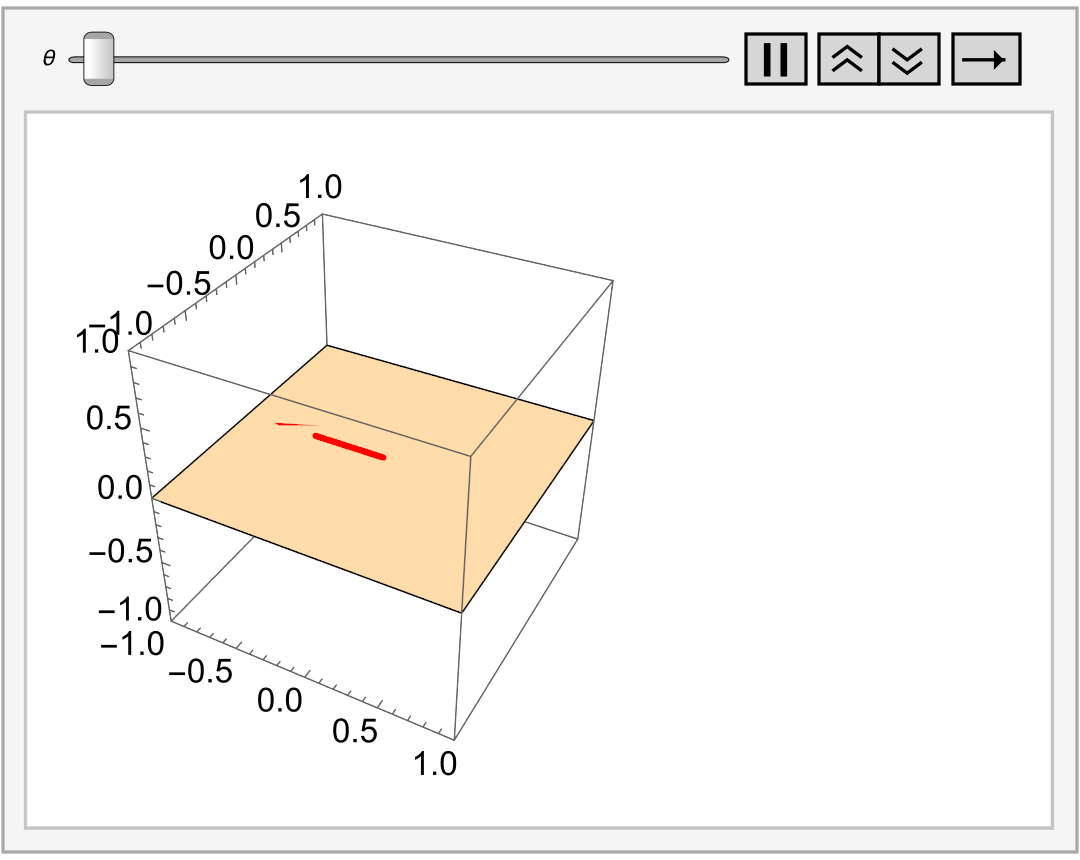Megan, page 10 about SLn
Quotient spaces
Quotient groups can seem mysterious but Theorem 10.22 tells a straightforward
tale. The partition on GLn (F) induced by the left (or right) SLn (F)-cosets is
according to determinant: Two matrices are in the same SLn (F)-coset if and only
if they have the same determinant. The thing distinguishing one element from
another in GL
Lemma 1: Let V be a vector space with subspace W. If v and x belong to V, then the following statements are logically equivalent:
- v is in x + W;
- v − x is in W;
- x − v is in W;
- x is in v + W;
- x + W = v + W.
Theorem 1:
Theorem 2: If V is a vector space with subspace W, then V/W is a vector space with addition defined by \[ ({\bf v}_1 + W ) + ({\bf v}_2 + W ) := ({\bf v}_1 + {\bf v}_2 ) + W \] and scaling defined by \[ k \left( {\bf v} + W \right) := k\,{\bf v} + W. \]
Let ℤ₂ = ℤ/(2ℤ) be a quotient space, which is more appropriate to denote by GF(2). It is the finite field with two elements (GF is the initialism of Galois field, another name for finite fields). GF(2) is the field with the smallest possible number of elements, and is unique if the additive identity and the multiplicative identity are denoted respectively 0 and 1, as usual. GF(2) can be identified with the field of the integers modulo 2, that is, the quotient ring of the ring of integers ℤ by the ideal 2ℤ of all even numbers: GF(2) = ℤ/(2ℤ).
The multiplication of GF(2) is again the usual multiplication modulo 2 (see the table below), and on boolean variables corresponds to the logical AND operation.
| + | 0 | 1 |
| 0 | 0 | 1 |
| 1 | 1 | 0 |
The multiplication of GF(2) is again the usual multiplication modulo 2 (see the table below), and on boolean variables corresponds to the logical AND operation.
| × | 0 | 1 |
| 0 | 0 | 0 |
| 1 | 0 | 1 |
Corollary 1: Let V be a vector space with subspace, W. If dim V = n and dim W = k, then dim V/W = n − k.
Theorem 3: Every subspace of a vector space V is the kernel of a linear transformation on V.
Theorem 4: Let V be a vector space over a field 𝔽 and W be a subspace of V. Then \[ W^{\ast} \cong V^{\ast} / W^0 , \] where W⁰ is the annihilator of W.
Now we show that f is onto. Then we show that any given χ ∈ W⁰ is the restriction of some φ ∈ W⁰. Let { w₁, w₂, … , wm } be a basis of W. Then it can be extended to a basis of V, say { w₁, w₂, … , wm, u₁, u₂, … , ur }, where m + r = dimV. Hence, we can write V = W ⊕ U, where U is a subspace of V spanned by { u₁, u₂, … , ur }. Now for any χ ∈ W✶ define ξ ∈ V✶ such that for any v ∈ V, v = w + v and ξ(v) = χ(w), where w ∈ W, u ∈ U. Let v₁ = v₂ and suppose that v₁ = w₁ + u₁ and v₂ = w₂ + u₂, where w₁, w₂ ∈ W and u₁, u₂ ∈ u. This implies that w₁ = w₂ and u₁ = u₂. As χ is a linear map, we get χ(w₁) = χ(w₂). This implies that ξ(v₁) = ξ(v₂) so ξ is well defined. It can be seen that ξ is a linear functional whose restriction on W is χ, i.e., f(ξ) = ξ|W = χ. Hence, f is onto and by fundamental theorem of vector space homomorphism W✶ ≌ V✶/Ker(f), namely, W✶ ≌ V✶/W⁰.
- Axier, S., Linear Algebra Done Right. Undergraduate Texts in Mathematics (3rd ed.). Springer. 2015, ISBN 978-3-319-11079-0.
- Beezer, R.A., A First Course in Linear Algebra, 2017.
- Dillon, M., Linear Algebra, Vector Spaces, and Linear Transformations, American Mathematical Society, Providence, RI, 2023.
- Halmos, Paul Richard (1974) [1958]. Finite-Dimensional Vector Spaces. Undergraduate Texts in Mathematics (2nd ed.). Springer. ISBN 0-387-90093-4.
- Roman, Steven (2005). Advanced Linear Algebra. Undergraduate Texts in Mathematics (2nd ed.). Springer. ISBN 0-387-24766-1.

